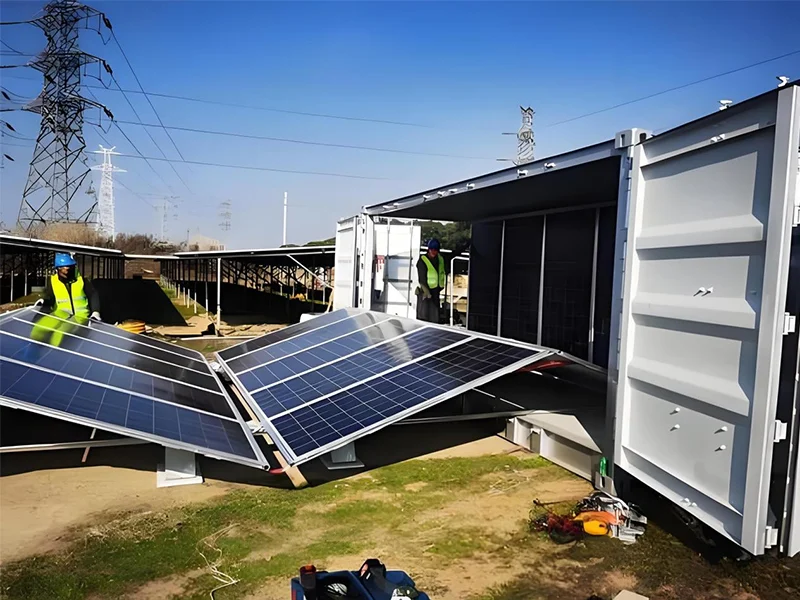When it comes to shipping solar panels, efficiency is everything. As a solar supplier, installer, or business leader who wants to ship panels by the truckload, it's handy to know how many solar panels can fit in a shipping container. So let's dive right in, step by step.
The Standard 40-Foot Shipping Container: How Many Panels Fits?
The most commonly used shipping container to ship solar panels is the 40-foot standard container. It can be loaded with about 500-600 solar panels, depending upon their size and how they are loaded. This is a more detailed breakdown:
- Pallet Capacity: A typical pallet can carry approximately 28-30 solar panels.
- Total Pallets Per Container: A 40-foot container can hold approximately 20 pallets.
- Total Panels Per Container: Working it out, you have 500-600 panels per container (20 pallets × 28-30 panels per pallet).
If you have a high cube 40-foot container, which provides you with additional vertical space, you might be able to fit a few more panels per pallet, with a little added capacity.
What About a 20-Foot Shipping Container?
Not all of them need a full 40-foot container. A 20-foot container is a smaller option and typically holds half of what a 40-foot container holds, or about 200-300 solar panels.
Factors That Determine the Number of Panels per Container
While the above numbers are general estimates, many factors can determine how many panels will fit into a container:
1. Panel Size and Thickness
All solar panels are not of the same size. Although a typical panel is approximately 1.7m x 1m (5.5ft x 3.3ft), new technology—such as high-wattage 600W+ panels—are typically larger and take up more space.
2. Packaging and Palletizing Strategies
Manufacturers use different packaging styles. Some pack panels tighter, while others have extra protective layers. The material used for pallets and how they stack them also influences capacity.
3. Weight Restrictions
Shipping containers have a weight capacity. A loaded 40-foot shipping container can weigh around 67,000 lbs (30,500 kg). If the panels are heavier due to thicker glass or frames, fewer will be loaded.
4. Shipping Rules and Safety Procedures
Some countries impose rules on stack height, cushioning padding, or weight distribution of containers, which affect how many panels can be loaded safely.
Outside the Container: Other Shipping Matters
Truckload Shipping: How Many Panels Travel on a Truck?
In truckload shipping, solar panels travel by road freight in a full truckload (dry van), which carries around 26 standard pallets, and can haul up to 780 solar panels. With Less Than Truckload (LTL) shipping, shipments can be consolidated with other cargo in a smaller shipment.
Sea Freight vs. Air Freight: Cost vs. Speed
Most big shipments of solar panels are via sea freight, which is cheaper but takes longer. Air freight is an option for an emergency shipment, but because solar panels are heavy and bulky, it is much more costly.
Thinking Beyond the Numbers: What’s the Best Shipping Strategy?
So what do you use to determine the best solar panel shipping option? Here are some things to take into account:
- Volume& Frequency: Are you sending one order or continuous bulk shipments?
- Budget: Is cost savings more important than delivery speed?
- Destination Regulations: Does the country of shipment have special requirements for solar panel packaging?
- Storage& Handling: Does it need special care to prevent damage during transit?
The Bigger Picture: Why Shipping Efficiency Matters
With the solar industry expanding, maximizing logistics can make a considerable difference in costs and carbon emissions. Smarter shipping means fewer containers on the oceans, less pollution, and lower expenses for companies and consumers.
A Thought to Consider
If you’re a solar business looking to scale operations, could investing in optimized packing methods increase your shipping efficiency and reduce costs? How might technological innovations, such as automated palletizing or AI-driven logistics planning, further improve solar panel transportation?
By thinking strategically, companies can not only fit more solar panels into a shipping container but also make a bigger impact in the renewable energy market.

